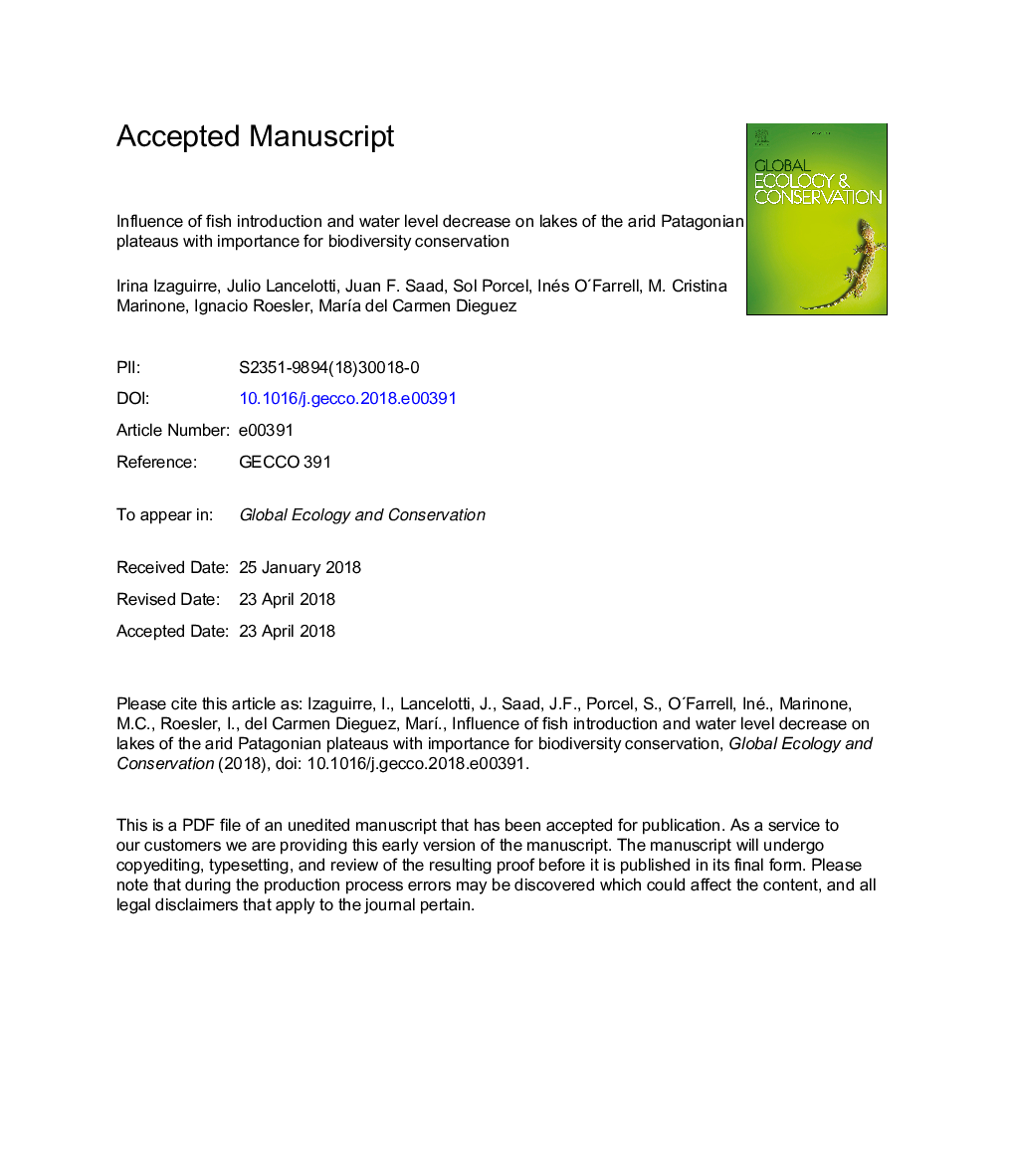| Article ID | Journal | Published Year | Pages | File Type |
|---|---|---|---|---|
| 8846221 | Global Ecology and Conservation | 2018 | 44 Pages |
Abstract
Biodiversity loss in shallow lakes is associated to several factors among which water level decrease and fish introduction are indicated as potential stressors. The Patagonian basaltic plateaus, located in one of the most arid regions of South America, hold thousands of shallow lakes and ponds and some large lakes, where vegetated lakes are the prime habitat for waterbirds, including endemic threatened species. We studied 31different lakes at the two main Patagonian plateaus (Strobel and Buenos Aires) during successive spring-summer field trips from 2007 to 2016. We focused on the differences between fishless and stocked lakes under contrasting hydrologic regimes (relatively stable waters and decreasing water level. Our survey evidenced the effect of fish introduction and water level decrease on the limnological features of the lakes and their phyto and zooplankton communities. Arheic shallow lakes showed a decreased water level accompanied by an increased conductivity, and several shifted from a clear-vegetated state to a more turbid condition, with increased algal biomass and demise in submerged macrophytes. Fishless lakes presented higher total zooplankton and macrozooplankton biomass and lower phytoplankton biomass than fish stocked lakes. Our findings provide evidence that under a scenario of climate change, the effect of the decrease in water level may enhance the adverse effects of fish introduction.
Related Topics
Life Sciences
Agricultural and Biological Sciences
Ecology, Evolution, Behavior and Systematics
Authors
Irina Izaguirre, Julio Lancelotti, Juan F. Saad, Sol Porcel, Inés O´Farrell, M. Cristina Marinone, Ignacio Roesler, MarÃa del Carmen Dieguez,
